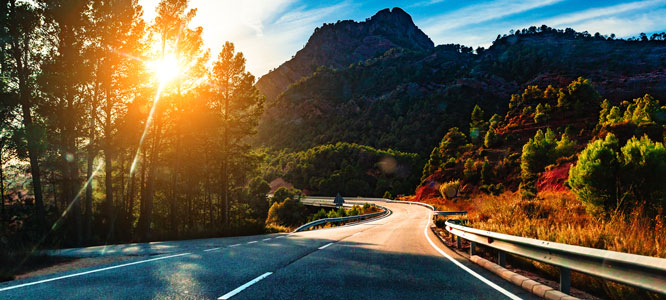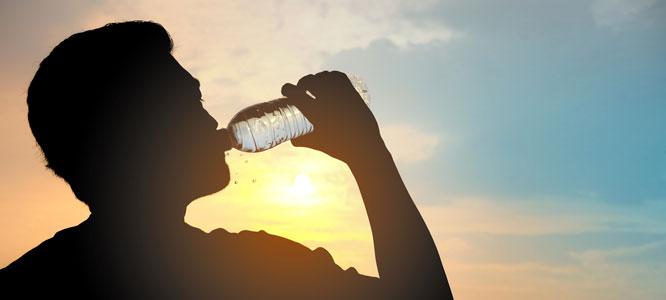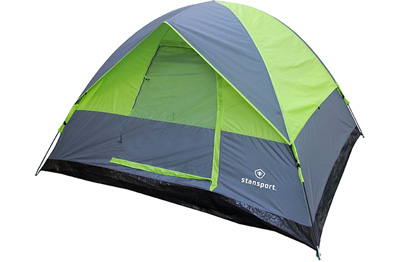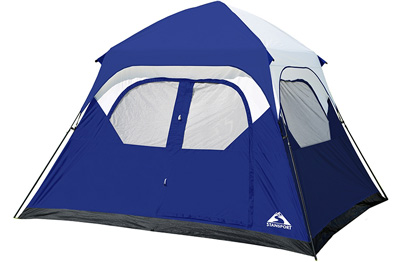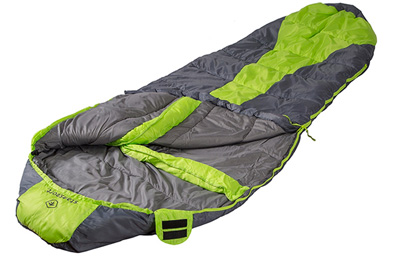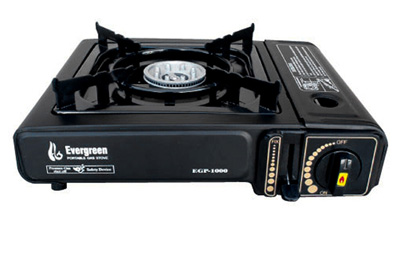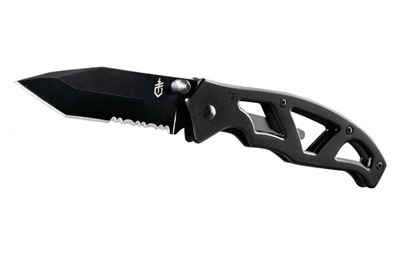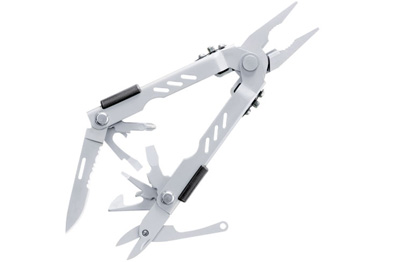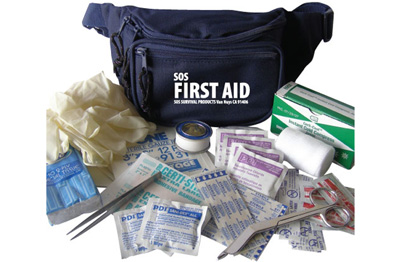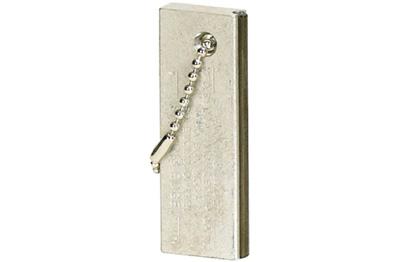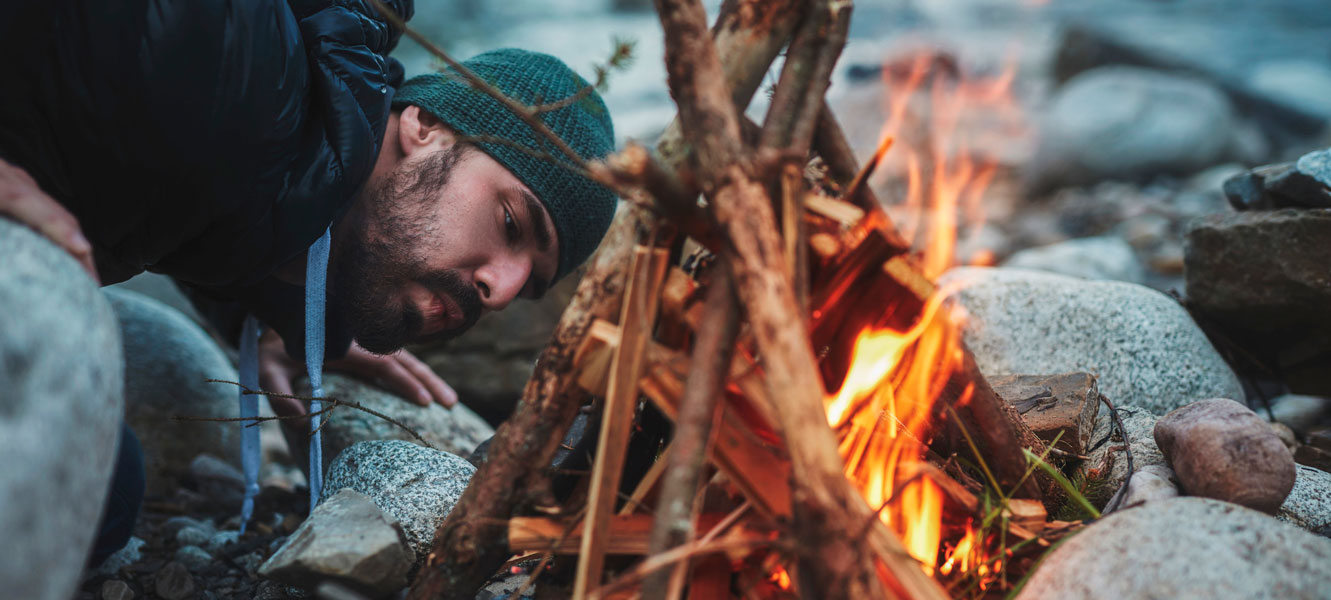
Camping Essentials For BeginnersWednesday, May 23, 2018 It’s that time of year again: camping season! Before you get your kayak and load up the truck with snacks and smash ball, let’s talk essential items. We know each camping trip is different. But we still recommend starting each excursion with some basics. We offer a range of high-quality camping products. Whether you’re headed to the mountains with friends for a backpacking trip. Or taking the kids out for a holiday weekend car camping. Are you a first-time camper or an experienced wilderness survivalist? We can help no matter the type of camping adventure you’re planning. There are lots of different types of camping trips to go on, including:
No matter your outdoor adventure, we can help. Check out our most recommended camping gear must-haves and camping tips below. TentsWe aren’t worried you’ll forget one on your camping checklist. But choosing the right kind of camping tent for your trip is important. It’ll be a vital part of your total camping experience. With so many kinds of tents on the market, it can be difficult to narrow down your best options. Do you need a tent stake set? Have you considered your tent footprint? What’s the lightest option for backpacking? There’s a lot to consider. But don’t worry. That’s why we’ve done the work for you. We’ve tried and tested our products for quality and effectiveness. And we’ve concluded that either a basic dome tent or an instant pop-up tent will suit even a beginner camper. Basic Dome TentsThese tents are true to their namesake because they pop up into a dome shape. This means that, unlike with an a-frame tent, you’re in for a pretty roomie experience. You even have room for an air mattress. These tents aren’t made for walking around in. But unlike some single-sleeper tents, they still offer plenty of room to breathe. At 4.5 feet high and 8 feet wide, this tent provides enough room to sleep four people. But we certainly won’t judge anyone who’s looking for that Weasley camping experience. Dome tents are painless to assemble. And they break down, and are light and compact for easy transportation. These tents are free-standing. So you can assemble them completely before staking them into the ground. You should stake your tent securely on all four sides. This prevents it from blowing away as soon as a gust of wind comes through your campsite. Instant TentsThese miniature bedrooms are ideal for extended stays in one location. Setup is easy, although all instant tents that feature an articulated frame will need more than one person. The more people you have, the easier it is to set one of these up. With the help of your family, your instant tent can be completely up and running in just two or three minutes. A tent like this will easily sleep six people. These homes away from home are a perfect combination of comfort and the outdoor experience. At 6-feet tall, they offer enough room for most people to walk around in. And the 10 by 9-foot floor space provides plenty of space for a camping cot. There’s also plenty of room for an inflatable mattress and sleeping pad gear. And any other camp things you might think of. The advantage of an instant tent is, of course, its unparalleled convenience. But, this tent won’t be for you if you’re looking for a solo backpacking tent. Or you’re setting up in windy conditions. Sleeping BagsThis is one of the camping basics. Yes, you could just grab a couple of blankets from the closet, but here’s why you shouldn't. SpaceUnless you’re setting up your campsite in your own backyard, you’ll need to pack your gear in a car or truck. As survivalists, we naturally prefer the minimalist approach. But we’re sure you’ll agree that having adequate seating room for everyone on your trip is ideal. The sleeping bag is light and compact. They roll up neatly and you can squeeze them into any corner of your car. Depending on how much you’re willing to spend, a sleeping bag easily fits into or onto your pack. This gives you a hands-free experience if you’re hiking to set up your campsite or backpacking. TemperatureAt a higher altitude campsite, summer temperatures can easily still drop low. The temps might plummet into the 30s and 40s at night. Covering yourself back to front in a comfy cocoon will ensure you don’t shiver through the night. Don’t wake up stiff and miserable. Choose a sleeping bag appropriate for the weather by checking its temperature rating. We offer summer, winter, and three-season bags. You can also bring along a sleeping mat. A sleeping pad can help insulate your body if the ground around you is cold. MoistureFinally, a proper sleeping bag will still keep you warm even when moist or wet. Although you may not be planning on rain, when camping, it’s better to be prepared. Nothing will ruin a camping trip faster than being unprepared for the weather. Butane Stove
This should rank pretty high on your camping list. If you’re camping for more than a night and want to eat more than trail mix, a camp stove like this is a camping checklist basic. Unlike a campfire, these flames are predictable and will help you prepare more than just s’mores.
If you’d planned to cook food over a fire, consider this. Temperature control is pretty difficult with an open flame. We get it, a camp fire is one of the backbones of the experience. But we recommend saving the open flame for warmth and light.
Gerber knife or Multi-ToolThis is bascially a Swiss Army Knife on steroids. If you think you don’t have a lot of use for such a complex tool, think again. This is an essential piece of camping equipment. They may look like they need the handling of an expert outdoorsman. But Gerber knives and multi-tools are a must-have at the campground. Whether you’ve a professional or a novice. Multi-ToolsMulti-tools offer many effective solutions to the everyday problems you’ll encounter while camping. They can look intimidating. But consider that they’re great for basic tasks such as tightening a loose screw. Or opening a bottle and picking something out of a tight crack. They’re also great for measuring a space or cutting something open. You don’t have to be a wilderness expert to use a multi-tool in this way. And it’ll save you hundreds of frustrating trips to and from your car or toolbox to keep one of these in your pocket. Keeping a multi-tool with you while camping helps you to prepare for the worst. And you can do this without a ton of extra equipment. These little tools can take on a variety of big jobs to save your time and keep your sanity. And you’ll be glad you have one if things ever do go wrong. Gerber KnivesThese knives are like multi-tools except that they focus on cutting things. Knives tend to be even more intimidating than multi-tools for novice campers. But don’t worry: these blades aren’t intended for protection. Having a knife in a life-or-death camping situation is more ideal than, say, not having a knife. But we know that 99.9 percent of camping trips won’t call for violence. So why bother bringing a knife? Knives help you to prepare and eat food, or cut kindling for a fire or rope for the tent. If you plan on fishing, you’ll need a knife. Is there anything a knife can’t do? With a creative approach, your knife can handle anything. First Aid KitLet’s be real. Whether you’re camping alone or with family, both are likely to end with at least one scraped knee. Or splinter. The first aid kit is an essential component to your camping supplies stash. We recommend keeping a permanent first aid kit in your car at all times. (Along with a small fire extinguisher.) So no matter where you go, you’re prepared for life’s little hiccups. A small fanny pack stocked with the essentials is a convenient way to keep what you need on your person. And you can do it without taking up extra room in your pack. Keep a basic starter kit at the campsite or on your vehicle. Your basic kit should contain the following, at the least:
We also recommend We also recommend carrying eyewash for those pesky dust or ash particles. Which are a part of every camping experience. Become an Expert Camper & Outdoor SurvivalistIf you want to take your camping or wildlife experience to the next level, you’ll need more than the proper tools. You’ll need proper preparation. There are plenty of websites and books on the topic of minimal and wilderness camping. But when it comes to emergency preparation, we prefer hands-on experience. The two-day wilderness first aid course will teach you everything you’ll need to know. It’ll also teach you treating cold- or heat-related injuries and taking care of broken bones. You’ll also learn about spinal injuries and more. You’ll have a superior hands-on experience. And you’ll receive expert advice and answers to your questions along the way. Remember that you need to be CPR certified to take this course and be at least 14 years of age. We offer training classes throughout the year. Or check with American Red Cross to find a class that’s starting now. This course is based on the Boy Scouts of America Wilderness First Aid curriculum and doctrine guidelines. And it uses OSHA’s best practices for workplace First Aid training programs. The Fire Starter
Ready to try your hand at an advanced skill today? The fire starter is one of our favorite camping tools. This is because it’s easy to use, affordable, and small enough to tuck away in any pocket. You learned it on Lost in Space: Magnesium burns hot and it’s unaffected by water! Never mind the logistics of melting ice with a magnesium fire.
What You'll Need:To successfully start a campfire, you’ll need tinder, kindling, and firewood. Tinder is the stuff that helps you start your fire. It’s stuff that’s super dry and will burn up fast, such as dry leaves and dry grasses. One major advantage to using a fire starter is that it’ll allow you to work with damp tinder. Kindling consists of small sticks that will help you to grow your fire. Make sure you have plenty of kindling to get a sizable fire going before laying on any large firewood.
Once your fire is burning strong and you can feel the temperature rising, it’ll be time to add larger logs one at a time. You can continue the “teepee” method by laying blocks of wood against one another. Or you might prefer a pyramid approach. Don’t add too much firewood at once. Making a lasting fire takes patience. Remember that no matter where you are, build your fire safely. Make sure it can’t burn out of control. This precaution should be paramount. If you don’t have a fire pit to work with, you’ll need to create your own. Keep in mind that you should only be building your own fire pit in an undeveloped area in case of an emergency. Build a fire to stay warm, deter wildlife, or to signal for help. There are a few other items you may want to include in your set of camping gear. Make a camping packing list. And don’t forget this camping checklist basic: food and water bottles. If you’re planning to hike after reaching your campground, don’t forget the right footwear. You’ll want a good pair of hiking boots or other hiking shoes. It’s also a good idea to include bug spray, toilet paper, and SPF lotion and lip balm. And be sure you have a sleeping pad for every member of your family. Make your checklist, and make your camping trip a success. |


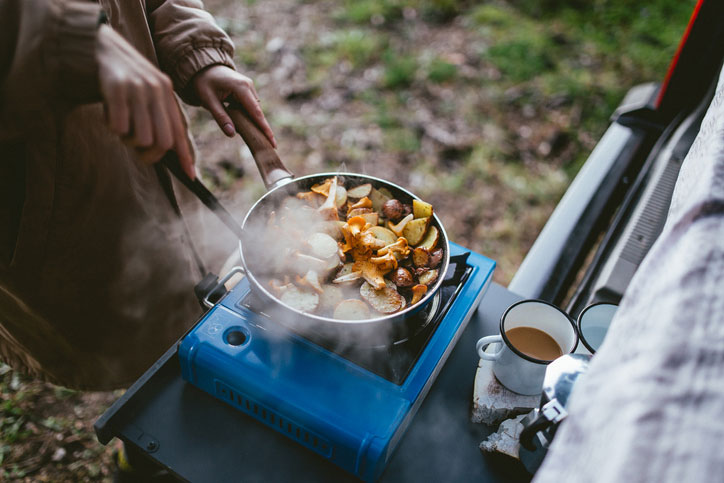 The temperature control on a portable camping stove will allow you to boil water. And it’ll ensure that your meal doesn’t become a charred brick if you take your eye away from the kitchen for a minute.
A butane stove is easy to assemble and disassemble. And doesn’t need any wood or other burning materials. This portable stove works in conjunction with disposable butane gas canisters. You can refill this with the help of certain adaptors. Portable stoves are easy to clean and store too.
Remember to bring other kitchen items too along with your stove. You don’t typically think of a dutch oven and paper plates when you think of camping gear. But you might be glad you brought them. You also should include a camping chair set. It’s a lot more relaxing to use a camp chair than to lean over your stove.
The temperature control on a portable camping stove will allow you to boil water. And it’ll ensure that your meal doesn’t become a charred brick if you take your eye away from the kitchen for a minute.
A butane stove is easy to assemble and disassemble. And doesn’t need any wood or other burning materials. This portable stove works in conjunction with disposable butane gas canisters. You can refill this with the help of certain adaptors. Portable stoves are easy to clean and store too.
Remember to bring other kitchen items too along with your stove. You don’t typically think of a dutch oven and paper plates when you think of camping gear. But you might be glad you brought them. You also should include a camping chair set. It’s a lot more relaxing to use a camp chair than to lean over your stove.
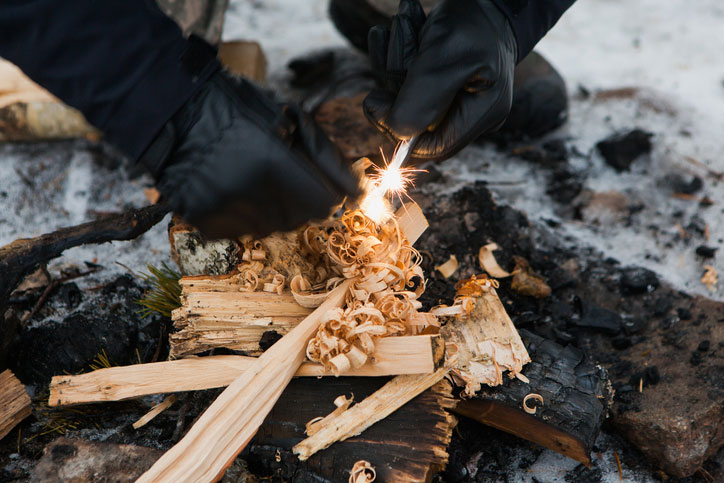 All you’ll need for your camping trip is one block of this fire starter and, of course, your knife or multi-tool. This little guy isn’t just a cool way to impress your friends, it’ll be your lifesaver in an emergency.
This fire starter will let you build a fire with little other resources at hand. Are you considering taking your camping experience to the next level? Then be sure you check out our article on fire safety and wildlife fire prevention.
If you won’t arrive at your campsite before dark, remember to bring a headlamp. A headlamp allows you the use of both your hands, so you can safely start a fire after dark. A headlamp is also a convenient item for other activities, like pitching a tent.
All you’ll need for your camping trip is one block of this fire starter and, of course, your knife or multi-tool. This little guy isn’t just a cool way to impress your friends, it’ll be your lifesaver in an emergency.
This fire starter will let you build a fire with little other resources at hand. Are you considering taking your camping experience to the next level? Then be sure you check out our article on fire safety and wildlife fire prevention.
If you won’t arrive at your campsite before dark, remember to bring a headlamp. A headlamp allows you the use of both your hands, so you can safely start a fire after dark. A headlamp is also a convenient item for other activities, like pitching a tent.
